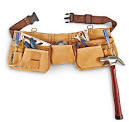
Hi I am Yadvi a manaskriti mind of class 6 , I am writing this blog to express my thoughts on my Maker's Lab project Tool ninja . This project was a interesting one with new technologys explained very well . It fasinated me to know more about the things explained , it allowed me to share my thoughts , enabled me to to use my creative thinking and helped me to enhance my knowledge . We worked in teams and understood the importance of team work . We started with a brainstorming solution every one came up with new ideas but we decided to create a tool belt and a wrist band . I learned about a software TINKER CAD ,it is a 3D designing software to create 3D desings for our project we also created a bookmark using this software. I also learned about Vernier Caliper it was used to measure the accurate width of a object we used it to measure the width of our tools to make the pockets of the accurate measurements . I have also learned about magnets we learned about the north pole and south pole of magnets the north pole and the south pole attracts , north pole and north pole repels also south pole and south pole repels we have also learned about different types of magnets such as bar magnets, neodimium magnets , ceramic magnets etc we also learned about temporary magnets and permanent magnets . I also learned to calculate the magnetic field strength with the help of a circuit it consisted of a hall effect sensor , resistor , a multimeter and a battery. THE BATTERY - it was used to provide electrical support . HALL EFFECT SENSOR - it is a sensor used to calculate the magnetic field strenght . RESISTOR - it resists the power of electricity . MULTIMETER - it is used to calculate the voltage . Battery gave out the power and then it had to reach to the hall effect sensor but the power was very much and the sensor can't manage this much of power so the resistor resisted the power and then the hall effect sensor calculated the magnetic field strenght then the multimeter showed the reading but the readings where in the form of voltage because multimeter is used to calculate voltage thats why it couldn't change it in a different unit and it was shown in the form of voltage we also learned to calculate the voltage of an object using multimeter. With this circuit we even calculated the strenght of magnets and we found that neodimium magnets had the highest magnetic field strength than the others. we have also used 3D printer to print the prototype of our tool belt . Even we learned about stiching skills we used a handheld portable sewing machine to sew the pockets of our tool belt . At the end we attached a velcro at the end and our tool belt was ready we were able to costomize it according to our sizes but when we kept all our tools in it some or the other tools were falling down and then we found the efficient use of magnets in it we attached the magnets at the back of each pocket as all of the tools were made up of iron the magnets holded them and prevented the tools from moving and our tool belt was created . lastly Thank you team @MAKERS SHALA for letting us do such interesting projects and providing us every for these projects . It helps to enhance our knowledge and lets us share our views and thoughts I am lucky that I am getting all this . I Love the projects you let us do. Also Thank you Tripti ma'am for making our projects more interesting by explaining us excellently .